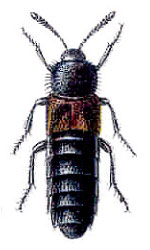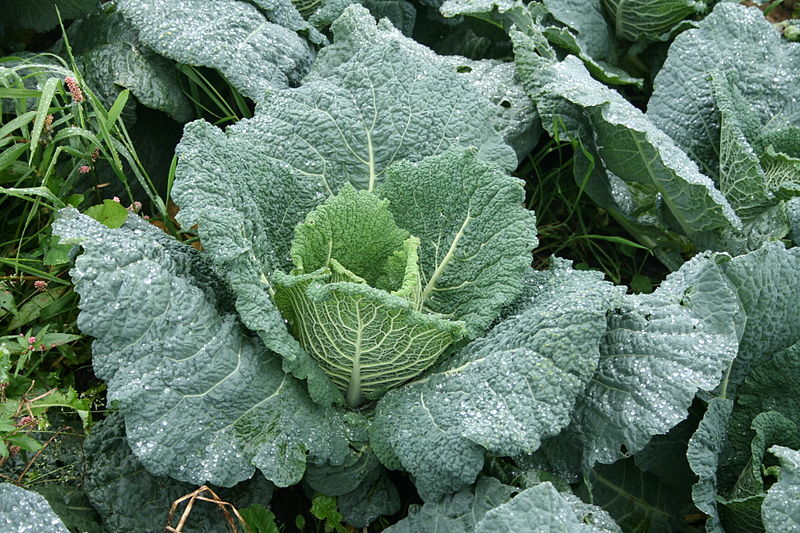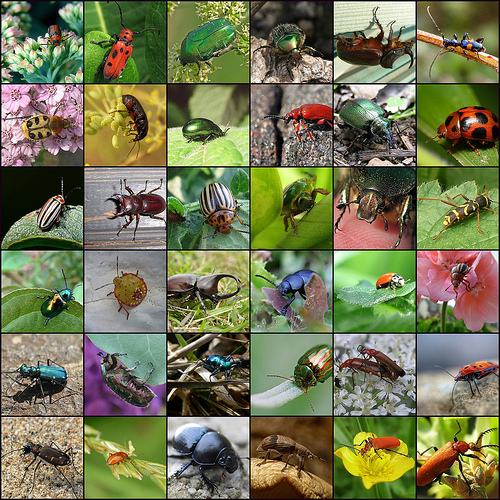The Rove Beetle

Welcome to the world of Aleochara
bilineata, or more commonly known as, the Rove Beetle. Rove
beetles are jet black beetles only measuring 5-6mm long. Although
these beetles are small, they are capable of tasks no other beetle
can perform. These insects are one of the only known types of
beetles who function as both a parasite and a predator
(Shelton
2013).
A. bilineata are the most commonly studied
species in their family, Staphylinidae. Though this family consists
of 400 other species, A. bilineata are the only ones used
as biological control agents. These
beetles will lay their eggs in the
soil near roots of crops, such as cabbage, onions, and canola. In
the beginning of their life cycle they are classified as parasites
because once they hatch from their eggs, seek a puparium to inhabit
(Warwick Crop Centre 2011). They will often spend the winter inside
their host, eating the pupa and growing into second stage larva.
A. bilineata’s main host is the cabbage maggot pupa. After
emerging from their host, they have reached their adult stage. Adult
A. bilineata are predators of cabbage maggot’s larva, among
other things. An adult beetle can consume up to five maggot larva
per day, totaling to 130 larva in their lifetime! A pair of beetles
will produce enough offspring throughout their lives to destroy 1200
eggs (Shelton 2013). That is why they are known as productive
control agents.
day, totaling to 130 larva in their lifetime! A pair of beetles
will produce enough offspring throughout their lives to destroy 1200
eggs (Shelton 2013). That is why they are known as productive
control agents.
Although they are known for living in the soil
around crops, they can also be found in a variety of environments.
These environments include forests, riverbanks, and mountains.
Within these environments, A.
bilineata live in close proximity to other beetle species. They
can be identified from related beetles by their short elytra. Elytra
are a specific characteristic to beetles and are defined as the hard
outer wings that protect and cover the thinner wings commonly used
for flight (Meyer 2009). For more information about the physical
characteristics of these neat bugs, visit the
form and function page!
To explore other beetles, arthropods, and all other worldly
organisms, check out
multipleorganisms.net!
Check out our reference page for more information on our facts and sources!
Disclaimer from the creators of this website: we cannot hyperlink the cover photo to the original page due to the setup of this website template. The image was found under the public domain with some rights reserved. To access the link to the copyright, click here. To access the oiginal image, click here.
